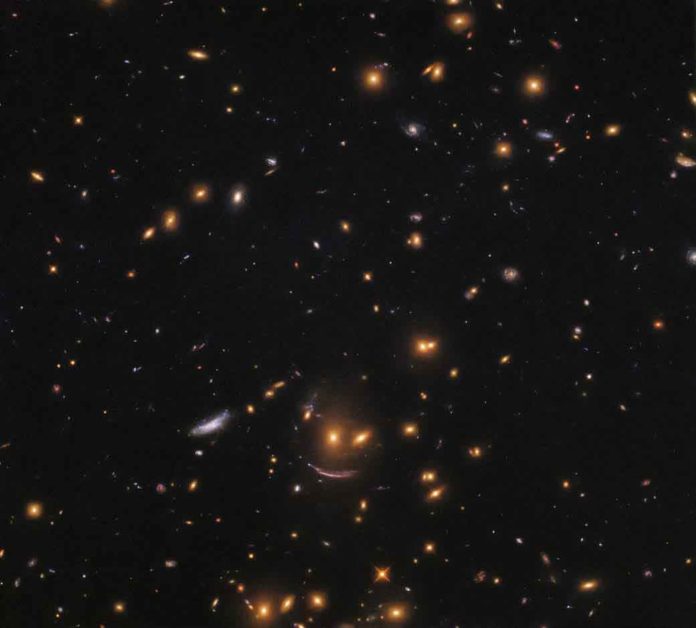NASA/ESA Hubble Space Telescope’s Wide Field Camera 3 (WFC3) has recently captured a patch of space filled with galaxies of all shapes, colors, and sizes, many of which belong to the galaxy cluster SDSS J0952+3434.
Just below the cluster, Hubble captured a formation of galaxies akin to a smiling face. Two yellow-colored masses hang on a broad circular segment of light. The lower arc has the characteristic state of a system that has been gravitationally lensed — its light has gone almost a huge question in transit to us, making it wind up mutilated and extended of shape.
The image was captured in order to get detail insights on how new stars spring to life throughout the cosmos. WFC3 can see distant galaxies at an unprecedented resolution — sufficiently high to find and study locales of star development inside them.
By analyzing the luminosity, size and formation rate of different stellar nurseries, scientists hope to learn more about the processes that can lead to the formation of a newborn star. Studying nurseries within different galaxies will provide information about star formation at different points in time and space throughout the universe.
